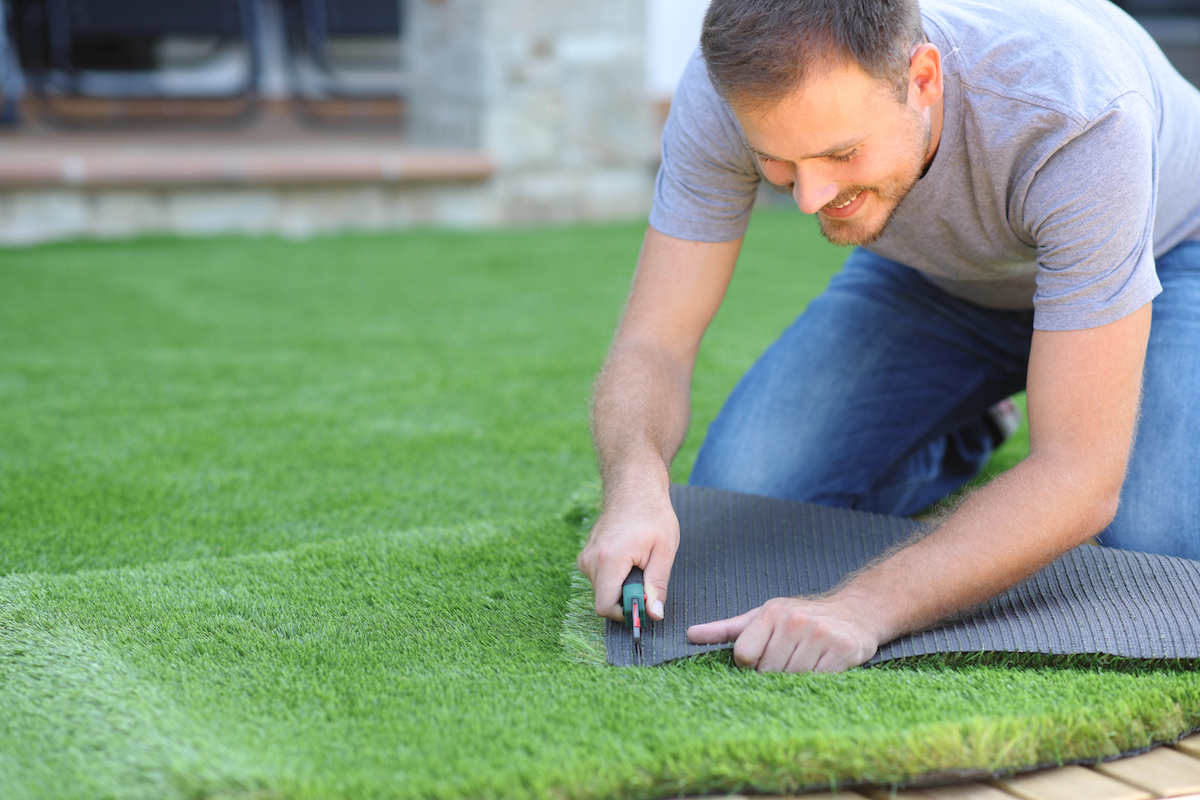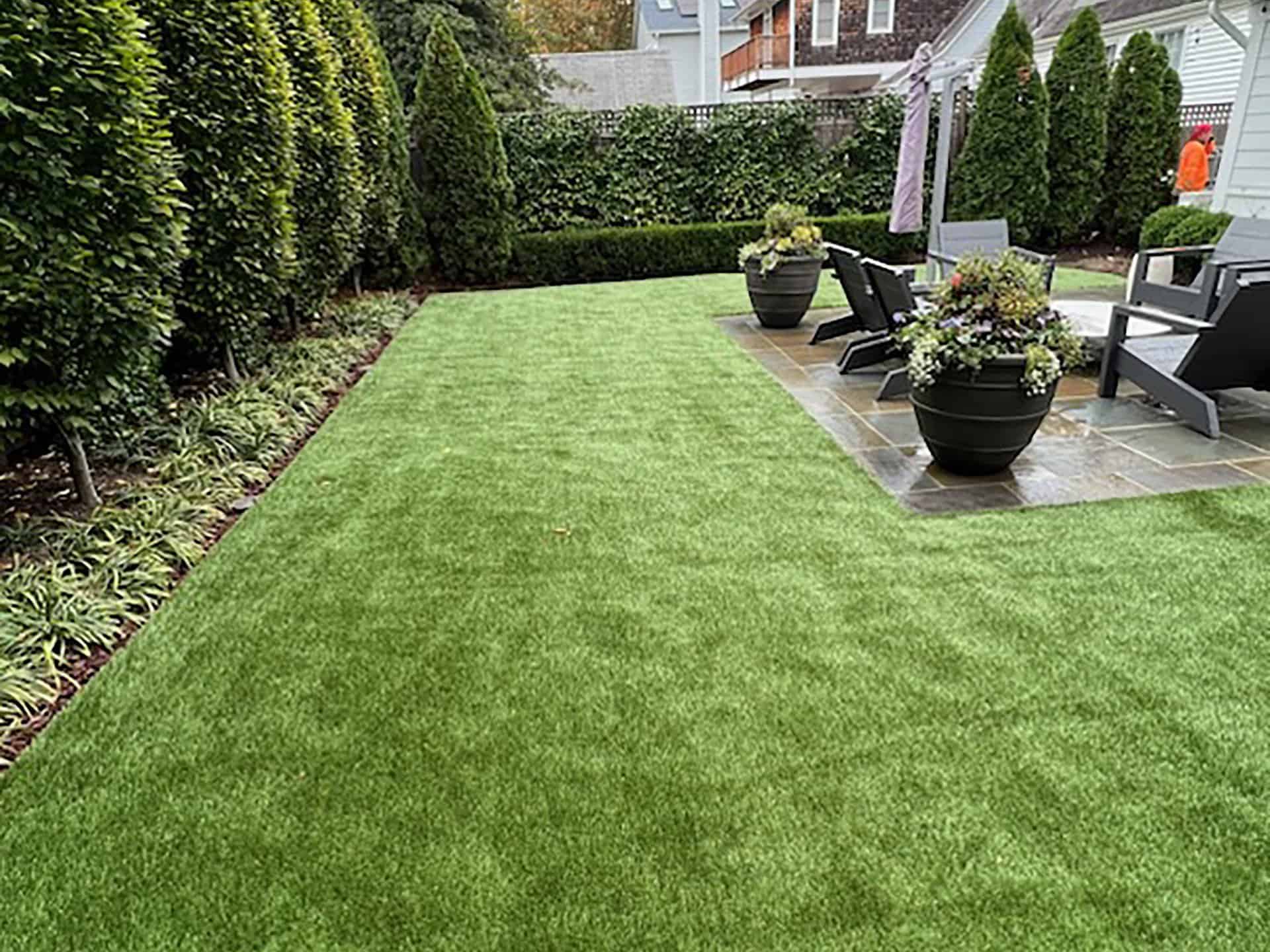Premium Arizona Turf Solutions for a Beautiful and Lush Landscape
Premium Arizona Turf Solutions for a Beautiful and Lush Landscape
Blog Article
Delve Into the Environmental Advantages of Opting for Artificial Lawn Solutions
The adoption of man-made grass solutions offers a compelling opportunity to deal with pressing ecological difficulties. By considerably decreasing water use and decreasing the application of dangerous chemicals, these choices not just advertise lasting landscaping yet likewise safeguard local ecosystems.
Water Conservation Benefits
Among the most considerable advantages of fabricated lawn is its capability to save water. Standard grass lawns call for considerable irrigation, especially in areas susceptible to dry spell or water restrictions. On the other hand, synthetic grass does not require watering, substantially decreasing the general demand for water resources. This feature is specifically beneficial in deserts where water deficiency is a pushing issue.
By eliminating the demand for regular watering, artificial turf adds to lasting landscape methods and assists minimize the ecological effect of extreme water usage. The conservation of water expands to the decrease of runoff, which can lead to soil erosion and waterway contamination.
In addition, the setup of fabricated lawn enables districts and house owners to allocate water sources a lot more efficiently, focusing on important usages such as alcohol consumption water and agriculture. The shift in the direction of fabricated lawn not only promotes responsible water use yet also straightens with wider environmental objectives intended at maintaining all-natural resources.
As neighborhoods progressively prioritize sustainability, the water conservation benefits of synthetic grass present a compelling situation for its fostering in domestic and industrial landscape design tasks.
Lowered Chemical Use
The change to synthetic turf dramatically decreases the reliance on chemical treatments commonly used in all-natural grass maintenance. Traditional grass administration typically involves the application of herbicides, fertilizers, and chemicals to advertise growth and control pests. These chemicals can position threats to human health and wellness, neighborhood wild animals, and the environment, adding to dirt and water contamination.
In comparison, artificial lawn eliminates the requirement for these damaging compounds. By reducing the release of synthetic substances right into the ecosystem, man-made grass promotes healthier dirt and water systems.
In addition, the lack of chemical drainage related to synthetic grass setups assists shield regional rivers from contamination, supporting marine life and maintaining biodiversity. Turf installation phoenix az. As communities increasingly prioritize lasting practices, selecting synthetic grass presents a viable remedy that lines up with ecological preservation objectives. Via this change, home owners can delight in rich green areas without compromising eco-friendly health, leading the way for a more sustainable future
Lower Carbon Impact

Moreover, the installation of fabricated grass can cause substantial water preservation. All-natural this website yards call for substantial quantities of water for irrigation, which not only contributes to the carbon footprint associated with water extraction and treatment but likewise strains local water resources. In contrast, artificial turf needs marginal maintenance, calling for no watering, consequently significantly reducing water use and its connected energy expenses.
Furthermore, the long life of synthetic grass adds to its decreased carbon influence. With a life-span of up to 15 years or more, the need for frequent substitutes is lessened, causing less waste and lower energy consumption in manufacturing and taking care of conventional grass options. Generally, artificial grass offers a sustainable choice for ecologically conscious landscape design.
Habitat Conservation
Habitat preservation is a crucial factor to consider in the dispute over landscape design selections, especially when contrasting synthetic lawn to natural yard. All-natural lawn lawns typically require considerable upkeep, consisting of the use of fertilizers, herbicides, and pesticides, which can adversely influence local ecosystems. These chemicals can seep into the soil and rivers, damaging indigenous flora and animals and interrupting regional habitats.
Fabricated turf eliminates the requirement for hazardous chemicals, thereby securing close-by wild animals and maintaining the stability of surrounding ecosystems. The installation of artificial lawn can lead to the conversion of former turf areas into more biodiverse landscapes, such as pollinator gardens or native plant areas, which can support local wild animals.
Inevitably, the transition to try this website synthetic grass not only saves water and lowers upkeep efforts however additionally fosters an extra unified partnership between human activities and the all-natural setting, promoting habitat conservation in the process.
Long-Term Sustainability
Long-lasting sustainability is a critical consider evaluating the advantages of synthetic grass over conventional grass yards. One of the most substantial advantages of artificial lawn is its longevity; it can last approximately 15-20 years with marginal upkeep, whereas all-natural yard needs frequent reseeding and replacement. This longevity decreases the requirement for constant resources, such as water, fertilizers, and chemicals, which are essential for keeping a healthy grass lawn.
In addition, man-made turf adds to a decrease in carbon discharges related to lawn care tools. Typical yards typically call for gas-powered lawn mowers, trimmers, and blowers, every one of which add to air pollution. Arizona artificial turf. In comparison, man-made turf gets rid of the need for such tools, promoting a cleaner setting
In addition, the manufacturing of artificial lawn increasingly makes use of recycled products, boosting its sustainability account. As makers adopt environment-friendly techniques, the environmental footprint of fabricated grass remains to reduce.

Conclusion
The fostering of man-made lawn options offers substantial environmental advantages, including significant water preservation, lowered reliance on hazardous chemicals, and a reduced carbon impact. Fabricated lawn help in protecting natural habitats by lessening land disruption and advertising lasting sustainability with the use of durable products. Jointly, these factors highlight the potential of synthetic grass to add favorably to ecological health and supply a viable choice to traditional landscaping methods in a significantly resource-conscious globe.
In comparison, synthetic turf does not require watering, significantly reducing the general need for water resources. By minimizing the launch of synthetic substances right into the environment, man-made grass advertises much healthier soil and water systems.
Additionally, the installation of artificial grass can result in considerable water conservation. In comparison, man-made turf requires marginal maintenance, needing no watering, thus considerably lowering water usage and its connected energy prices.

Report this page